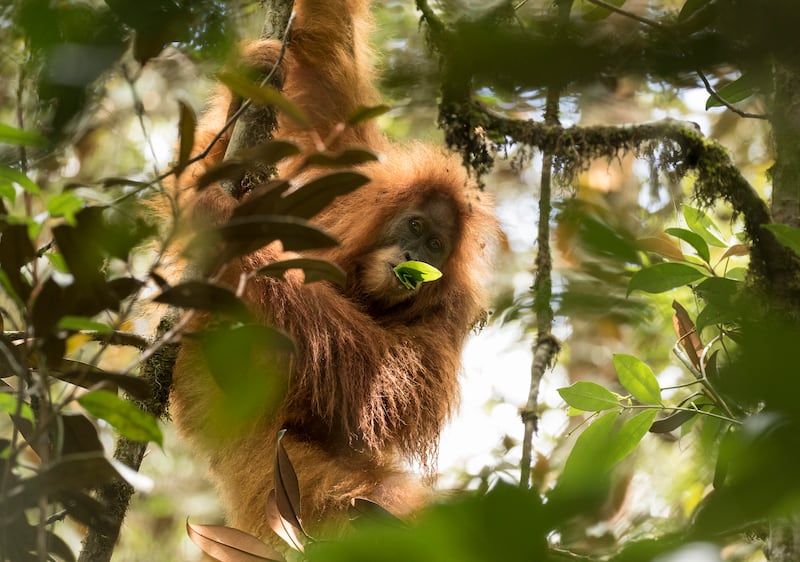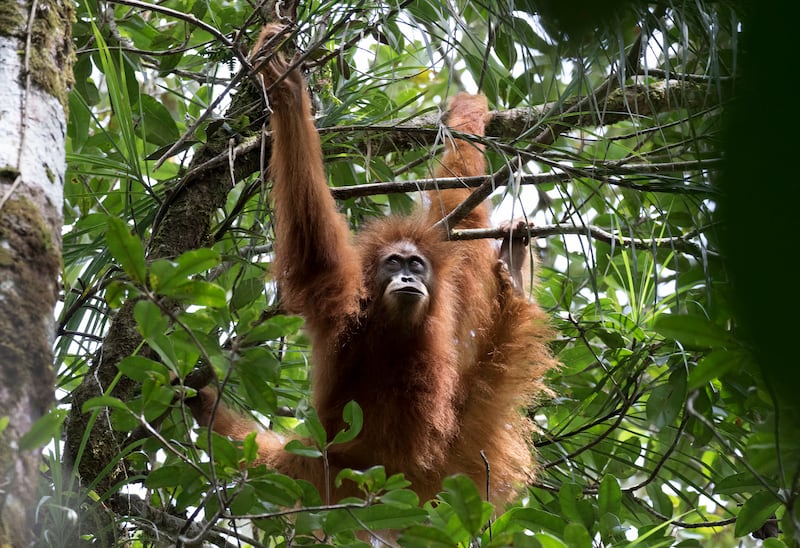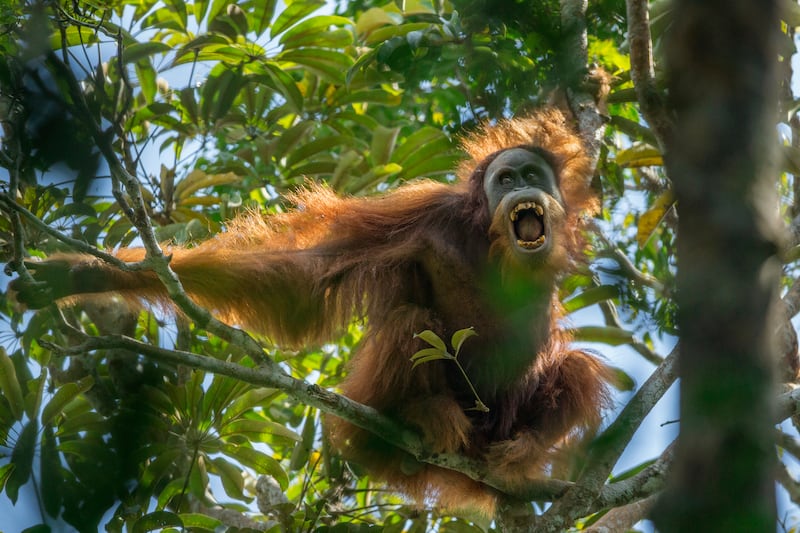A new species of orangutan with a small population of 800 has been described by scientists in a new study.
Found living in the forests of North Sumatra in Indonesia, the Tapanuli orangutan (Pongo tapanuliensis) was originally considered to be part of the Sumatran orangutan population but scientists now consider it a separate species, meaning it is among the most endangered of all great ape species.
Following the discovery of the skeletal material, believed to have come from a Tapanuli orangutan killed in a human-animal conflict in 2013, an international team of researchers set out to understand more about the distant ape relative of humans.
On comparing the skull and dental characteristics of the species from the Batang Toru area to those of 33 other adult male orangutans of a similar developmental state, they found “unique” structural differences.

Anton Nurcahyo, a PhD student from the Australian National University, said: “We were completely surprised to find that the skull is quite different in some characteristics from orangutan skulls we had seen before.”
He added: “It has a smaller skull, but larger canine teeth than other orangutan species.”
Orangutans were considered to be one species until 1996, belonging to the genus – a taxonomic rank used in the biological classification of organisms – Pongo.
Designation of Bornean and Sumatran orangutans as two separate species, P. pygmaeus and P. abelii, occurred in 2001, the researchers said.

With studies revealing the Tapanuli orangutan skull to be “potentially unique”, the researchers then conducted the largest ever genomic analysis, which involved a comparison of genomic features such as DNA sequence, structural variation and gene expression, on wild orangutans and found evidence pointing to a third species.
Dr Maja Mattle-Greminger, of the University of Zurich, who led the genomic analysis along with Dr Alexander Nater, said: “For quite some time, we had been working on genomic data to investigate the genetic structure and evolutionary history of all existing orangutan populations.
“One consistent result was that we identified three very old evolutionary lineages among all orangutans, despite only having two species currently described.”
The discovery prompted Dr Nater to carry out extensive computer modelling to reconstruct the population history of orangutans in the region.

His analysis suggested the Batang Toru population may have been isolated from other Sumatran populations for at least 10-20,000 years.
Professor Serge Wich, of Liverpool John Moores University, who provided ecological expertise to the study, said: “It is incredibly exciting that a new orangutan species has been described and it’s a wonderful addition to Indonesia’s high biodiversity.
“At the same time, the low number of Tapanuli orangutans in the wild indicates that there can be no complacency in terms of its conservation.
“If steps are not taken quickly to reduce current and future threats to conserve every last remaining bit of forest, we may see the discovery and extinction of a great ape species within our lifetime.”
The research is published in the journal Current Biology.








